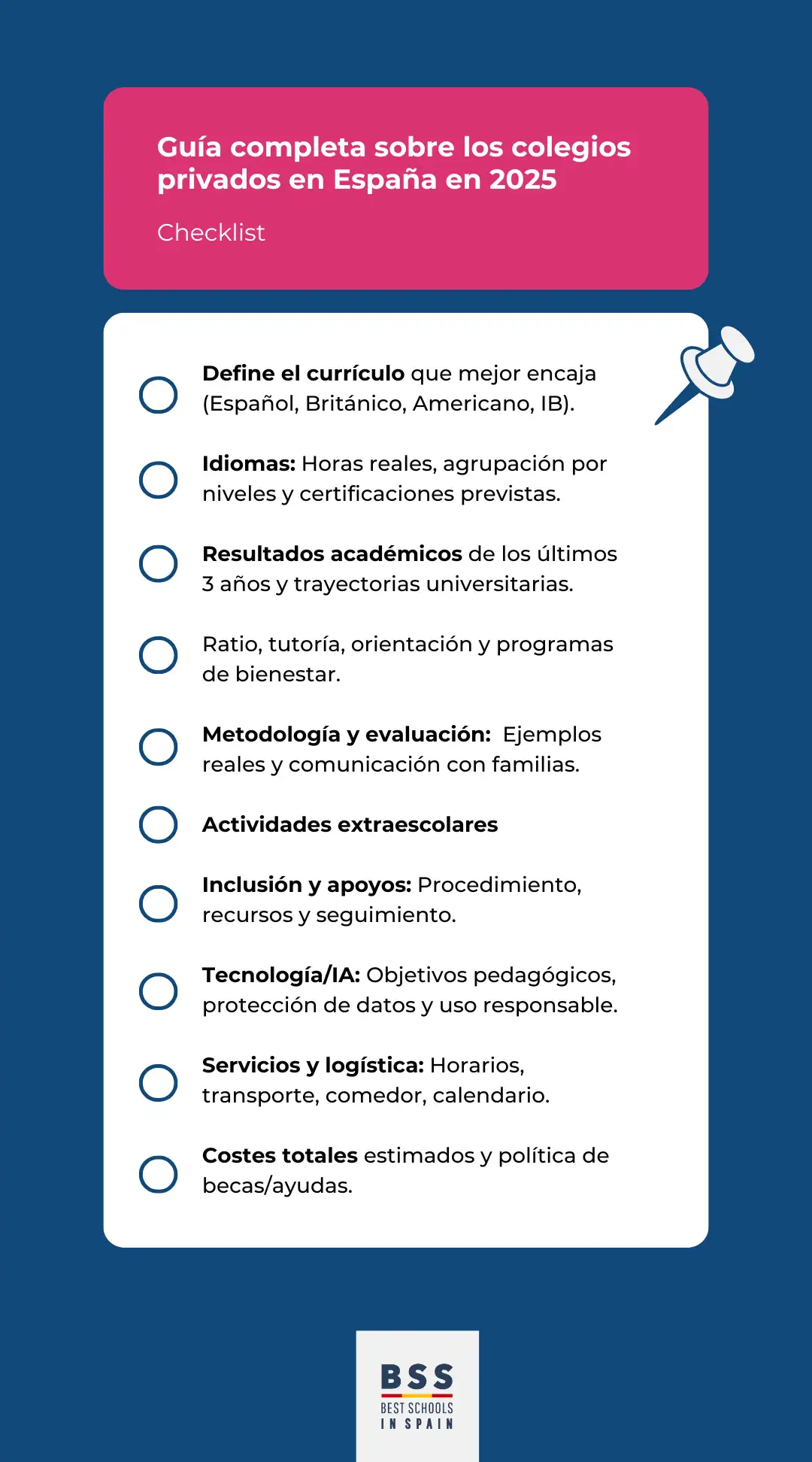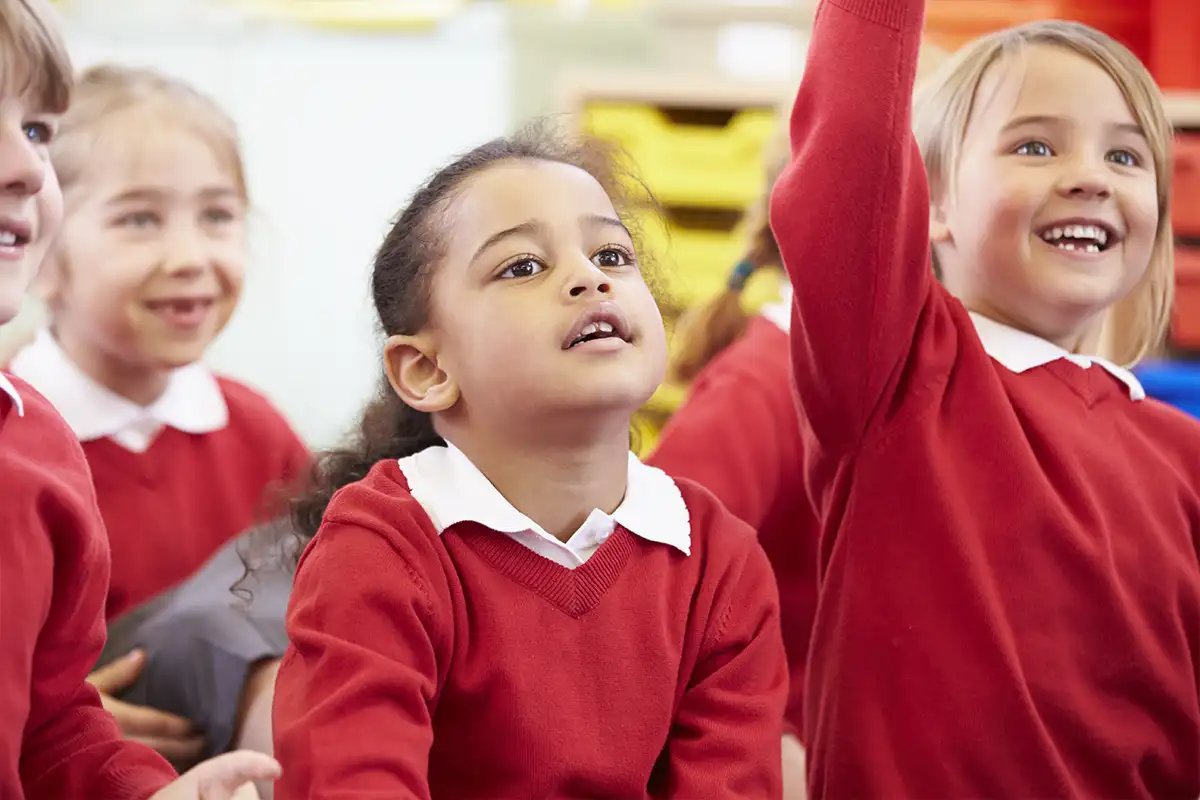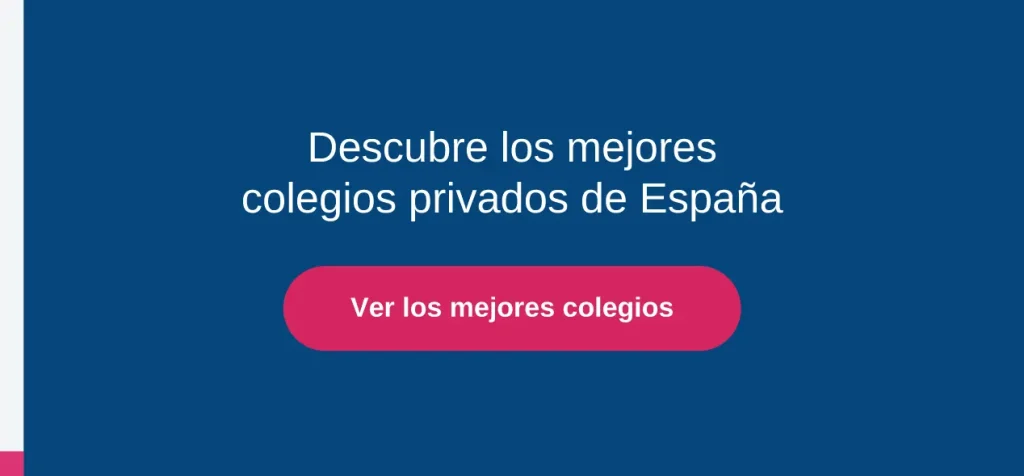Private schools in Spain 2025 is the search that many families make when they start comparing options ahead of time. Making the right choice is not just a matter of looking at quotas or distance: involves understanding the curriculum, the pedagogical approach, the language project, attention to welfare and university projection. This guide synthesizes the key points to make an informed and sustainable decision for the entire course.
What is a private school and what distinguishes it?
Private schools are characterized by their autonomy in defining their educational project, methodology and services. In practice, this usually translates into adjusted ratios, individual monitoring, continuity in languages and a school life rich in activities. The difference with public and subsidized schools is not only financial: there are also diversity in curricula, assessment and pathways to university.
Curricula available and who benefits
Choosing a curriculum is choosing how to learn. Before deciding, it is advisable to think about the student profile and higher education horizon. Below is a brief description of each itinerary and, below that, a comparative table to see it at a glance.
- Spanish curriculum (LOMLOE + EBAU): Itineraries with a wide range of subjects and natural access to Spanish and European universities.
- British (English National Curriculum, IGCSE, A-Levels): Specialization in 3-4 subjects at the end; excellent fit if there is definite vocation or international destination.
- American (High School + AP): Continuous assessment, possibility of advanced credits (AP) and seamless connection to the USA.
- International Baccalaureate (IB: PYP, MYP, DP): Competency focus, research and international mindset; global recognition by universities.
Appearance | Spanish | British | American | IB |
Approach | Amplitude + EBAU | Specialization | Continuous + AP | Competence + Research |
Final stage | 2nd Baccalaureate | A-Levels | AP/Advanced | IB Diploma (2 years) |
University access EN | Direct (EBAU) | UNEDasiss/ Validation | UNEDasiss/Convalidation | UNEDasiss/ Validation |
Fortress | Aligned with ES | Depth | Flexibility | International profile |
Ideal profile | Generalist | Defined vocation | Mixed | Global/versatile |
Tip: If your child needs breadth and competencesee IB. If you want to specialize soonconsider A-Levels. If you are looking for continuity in Spainchoose Spanish. If you project USA. USA.values American.
Languages: quality, continuity and actual use
The value of a language program is not measured only in hours. What matters is the continuity in stagesthe qualified teachersthe grouping by levels and, above all, the real use of the language: debates, theater, exchanges, recorded presentations and a certification path (Cambridge, Trinity, DELF/DALF, Goethe).
The objective is to speak, write and think in the language with authentic assessments.
Methodology and evaluation with evidence
Active methodologies contribute when they are accompanied by transparent rubrics y evidence of progress. Ask for examples of tasks, schedule of mock exams and grading criteria help verify that the methodological promise is being fulfilled in the classroom. Laboratory, public speaking, guided writing and cooperative work should make their mark in notebooks, portfolios and newsletters.
Well-being, coexistence and mentoring
Sustained performance begins with whole student care.
- Emotional education: Staged programs and proactive mentoring.
- Coexistence: Anti-bullying protocols and mediation.
- Balanced loads: Coordination in times of exams.
- Warning signs: Changes in sleep, mood, or concentration → Temporal adjustments.
Inclusion and specific support
Attention to diversity begins with an initial initial assessmentassessment, continues with an individual plan and reviewed with data. Supports such as reinforcement, speech therapy or enrichment should be defined, with clear communication channels and criteria for adjusting times, tasks or assessments when necessary.
Educational technology and AI with purpose
Technology contributes when it enhances learning and respects privacy.
- 1:1 devices or mixed classrooms: Clear management and maintenance.
- Learning platforms: Shared progress dashboards.
- Media literacy: Critical use of information and content.
- Projects with AI: Ethics, safety and presentable products.
- Cybersecurity: Policy, teacher training and data control.

Admission, deadlines and documentation
The process usually includes a visit, interview, possible placement tests and file review. Visit January and May is the most common decision making period, although the demand at certain stages makes it advisable to anticipate to anticipate visits in autumn. Arriving with clear questions accelerates the comparison between schools.
- Oct-Dec 2024: Visits and open days.
- Jan-Mar 2025: Applications, interviews, placement tests.
- Apr-May 2025: Vacancy offers, scholarships and formalization.
- Jun-Jul 2025: Books, uniforms, transportation and schedule fitting.
Tip: If you’re looking for a change in curriculum or stage, move the visit up to the first quarter.
Costs, grants and transparency
In addition to the tuition fee, it is important to budget for services (canteen, transportation, uniforms), materials, external examinations, travel y extracurricular activities. Transparency consists of receiving the breakdown by items, return policiesand refund policies and information on scholarships/scholarships and sibling discounts. The fair comparison is made with the estimated total annual cost.
Private schools in Spain 2025: what do they contribute in practice?
The BSS schools share a common base that facilitates comparison: proven academic results, continuity of language languages with certifications, international international curricula (IB, British or American), arts and sports artistic and athletic programs with progression, and a strong culture of wellness y university orientation. In addition, they are distinguished by very specific practices that make a difference:
- Academic transparency: Publication and explanation of averages of the last courses, mock exams and evaluation criteria.
- Evidence of learning: Portfolios, interdisciplinary projects, and oral presentations assessed with rubrics.
- Real internationality: Exchanges, MUN/debate, official certifications and access to universities inside and outside Spain.
- Personalized follow-up: Stable tutoring, coordination with guidance and individualized plans when necessary.
- Rich and coherent school life: Extracurriculars with itineraries (sports, arts, STEM), competitions and social projects.
If your family appreciates this set of guarantees, it is advisable to to visit two or three private schools in Spain 2025 in your province and ask for key documents: language project by stages, sample assessments, schedule of mock examsThe information you provide will help you to get the results of the last three years and recent university destinations. With this information you will be able to compare with objective data and align the choice with your family project for 2025.
Frequently Asked Questions
1) What distinguishes a private school in Spain?
Private schools stand out for their educational autonomy, personalized attention and international projects. They offer flexible curricula, individual follow-up, wellness programs and university orientation.
2) What types of curricula exist in Spanish private schools?
The most common are the Spanish (LOMLOE), British (A-Levels), American (High School + AP) and International Baccalaureate (IB). Each offers different advantages depending on the student’s profile and university destination.
3) How to choose the best private school for your child?
Compares curriculum, languages, welfare, methodology and results. Reviews ratios, tutorial support and continuity in languages. Visits and interviews help to evaluate the real fit with the center’s philosophy.
4) When does the 2025 admission process begin?
Generally between January and May, although visits usually take place in the fall. Early access to places, scholarships and placement tests are available.
5) Why choose a BSS school?
The Best Schools in Spain offer academic excellence, international education, well-being and family support, guaranteeing a complete education and a smooth transition to university.



